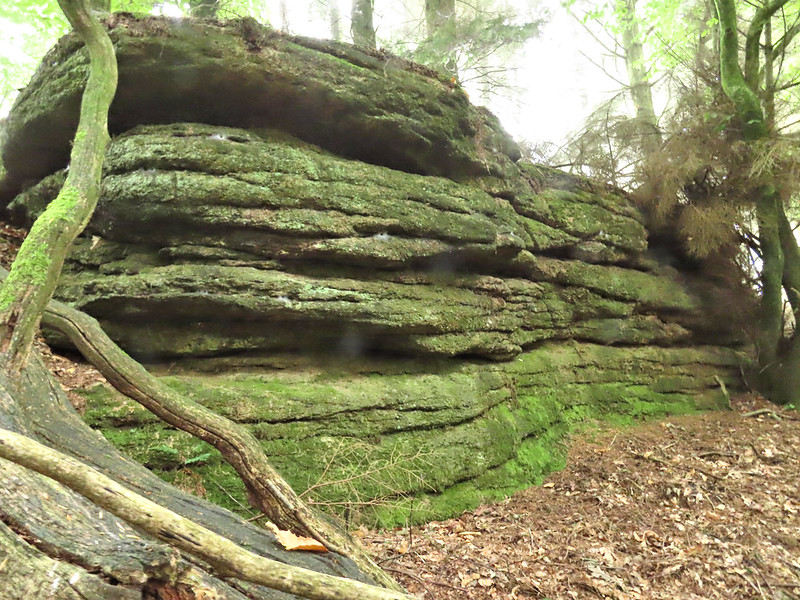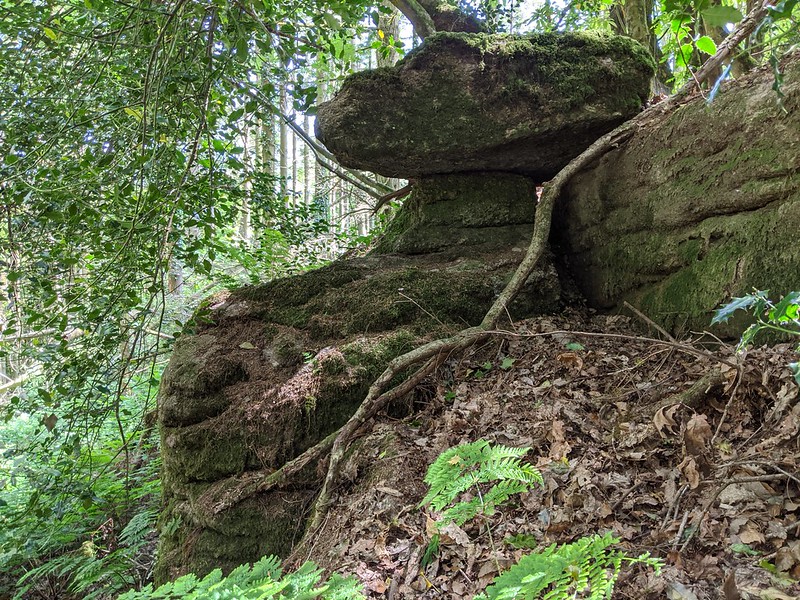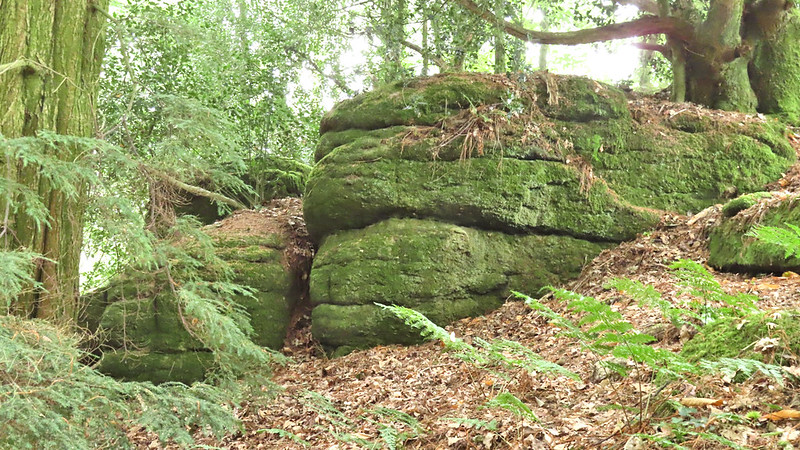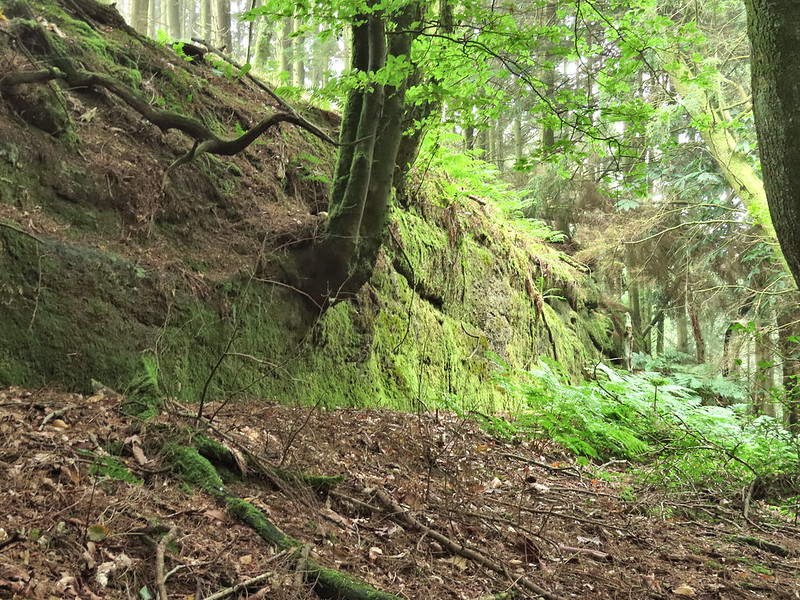TORS OF DARTMOOR
a database of both lesser- & well-known rocks and outcrops
Shuttamoor Crags
 To the east of Shuttamoor Farm and set above the south side of the stream is a collection of dark and quite brooding rocks that protrude from the steep gradient of the hill. They are seen to best effect from the north side as a series of emergent granite outcrops that are marked by close horizontal jointings. The crags straddle the parish boundaries of Christow and Hennock and are well represented on historic Ordnance Survey (OS) Maps.  Shuttamoor (locally 'Shootimoor') is best-known for Shuttamoor Mine which produced a type of iron oxide called micaceous hematite also known, colloquially, as 'shiny ore', which was found throughout East Dartmoor. Brooks (2004, p.164) remarks that "Whilst recorded working started in 1897, the presence of an old shaft marked on the 1890 First edition Ordnance Survey map indicates that it must have been worked much earlier." An OS Map, published in 1888, shows an 'Old Shaft' which predates the first recorded workings as 1897 and would certainly give some credence to Jenkinson's (2018) assertion that "the poor-quality mineral in the area necessitated its abandonment in 1890." and Fraser (2004) who states that Shuttamoor Mine "Produced Iron ore for a very short period in the 1890s." It is probable that the mine closed for around 7 years before it was taken over by a new firm.  The abundant mining activity that was once overlooked by Shuttamoor Crags is no longer and what remains today is a scene of much contrast: the plantation that envelopes the valley is shrouded in enigma, concealing the industrial remains and possessing a certain eeriness that makes the visitor feel uneasy. The dense canopy of trees, sometimes cast in perpetual mist, stud the slopes and make the crags difficult to see, even at close-quarters.  Whilst neighbouring Shuttamoor Rock is on private land, Shuttamoor Crags reside on open access land, but due to the potentially dangerous nature of the mine shafts the terrain is difficult to traverse and as such has been cordoned off by a barbed wire fence for public safety. Only distant, minimal glimpses of the crags are to be had from the perimeter fence to the east. The Tors of Dartmoor team are grateful to Paul Rendell for initially contacting us about Shuttamoor Crags in February 2020.
| ||||||||||||||||||||||||||||||